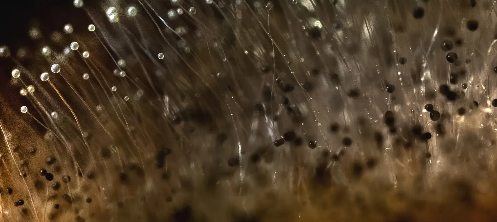Mold is a fungus that can grow in many different places inside and outside your home. It can cause various health problems, so it’s crucial to detect and illuminate mold as early as possible. One way to do this is by using a black light. In this blog post, we will discuss how to detect mold under black light.
What is mold and why is it important to detect it early?
Mold is a type of fungus that can be found in many different places both indoors and outdoors. While mold is typically harmless, exposure to it can cause a variety of health issues, including respiratory problems, headaches, skin irritation, and more. Therefore, it’s essential to detect mold as early as possible in order to minimize your exposure and limit the potential health risks.
How does black light help detect mold colonies?
One effective way to detect mold is by using a black light. A black light makes visible mold that might otherwise be hidden in darker, more concealed areas of your home, such as behind walls or underneath furniture.
To use a black light to detect mold follow these steps:
Step 1
Inspect your home for any telltale signs of mold, such as moldy smells or visible patches on walls, grout, wooden fixtures, or fabrics.
Step 2
After you have discovered areas that might contain mold, enter the room and make sure all light sources are turned off and windows/doors are closed. With your black light in hand, turn it on and inspect the surface area for mold. Look for a bright yellow or green-yellow glow along the sides of the mold colonies to confirm their presence.
Pro tip: It’s important to pay special attention to the angle of illumination when using a black light to detect mold. You should be sure to shine the light closely along the sides of suspected surfaces for the best results.
Step 3
Once you have detected the mold, it is important to verify that the mold colonies are indeed mold and not some other type of contamination. For example, if you suspect mold growing under your carpet, be sure to check for highlighter ink or cleaning products that may emit a similar glow.
Step 4
If the mold is verified, it is important to take action right away to remove or treat the mold colonies. This may involve calling in a professional mold remediation specialist or using self-help methods like mold removal products or mold-killing sprays.
what color is mold under a blacklight?
Mold typically glows green, yellow, or orange under
What Black Light Do You Need?
There are a variety of black lights available on the market, so choosing the right one can be a bit tricky. When selecting a black light, it’s important to consider factors such as brightness, wavelength and portability. Some popular options include UV LED flashlights, handheld black lights, and portable black light tubes. To determine whichis right for your needs, do some research to compare different models and read reviews from other users. With the right , you can easily detect mold and take steps to get rid of it.
Why does mold glow under a black light?
Mold typically emits a slight glow when exposed to due to the presence of certain chemicals in its cells called luciferin and luciferase. These chemicals help molds thrive by providing them with energy and promoting cell growth. While mold can appear bright and glowing under , it is important to remember that this does not necessarily mean that it is more concentrated or severe than mold that does not glow. Rather, mold growth can vary greatly in terms of size, shape, and density, so looking for mold using a black light should always be just one part of your overall mold detection strategy.
Nevertheless, using a black light to detect mold can be an effective way to get an early indication of mold problems in your home and take action as needed.

